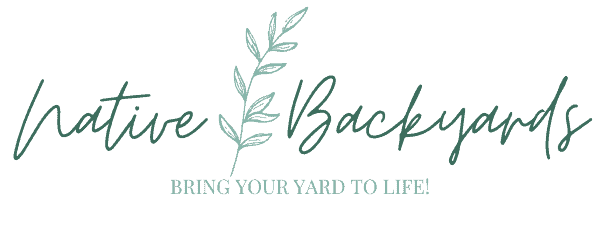20 Beautiful Wildflowers of Alberta Canada
The Canadian Rockies come alive with native Canadian wildflowers during the summer. I had so much fun photographing and identifying these native plants on a recent trip to Banff National Park in southern Alberta.
Be sure to get my Top 20 Banff Wildflowers Checklist to print out and take with you on your next visit to Banff. You can check off the wildflowers as you spot them!
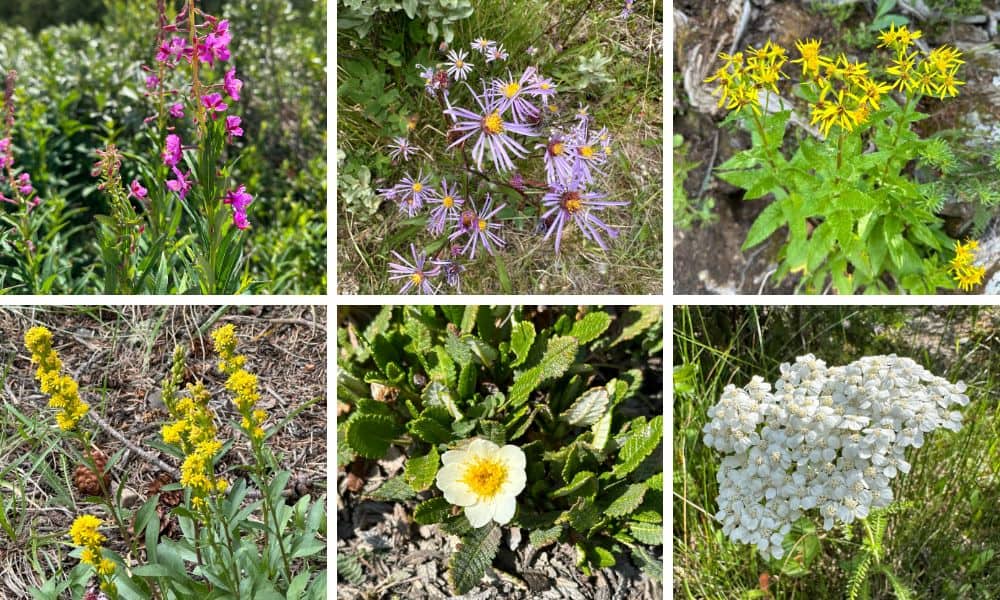
I love learning about the unique plant species of the places I visit. What’s blooming in Canada is a lot different than whats blooming in my home state of Texas. Learning about the native flora and fauna is a great way to explore a new place. I used the free iNaturalist app to help me identify the plants that I see.
Below are the Top 20 wildflowers you can find blooming in the mountain regions of Alberta in the late summer. Many of these flowering plants are native throughout Canada and other parts of North America.

20 Beautiful Canadian Wildflowers
Summer is the best time of year to spot these plants. July is peak growing season for native wildflowers in Alberta.
I’ve included both their common names and botanical descriptions. A plant can have several different common names but only one botanical (scientific) name.
1) Fireweed (Chamaenerion angustifolium)
This is a common Alberta flower and likely the one you’ll see the most if visiting Banff! This native wildflower with pretty purple flowers is also known as Willowherb in some parts of Canada.
It gets its common name of Fireweed, because it is often one of the first plants to grow after a forest fire. These showy flowers can be found throughout Canada and parts of the United States in a montane zone.
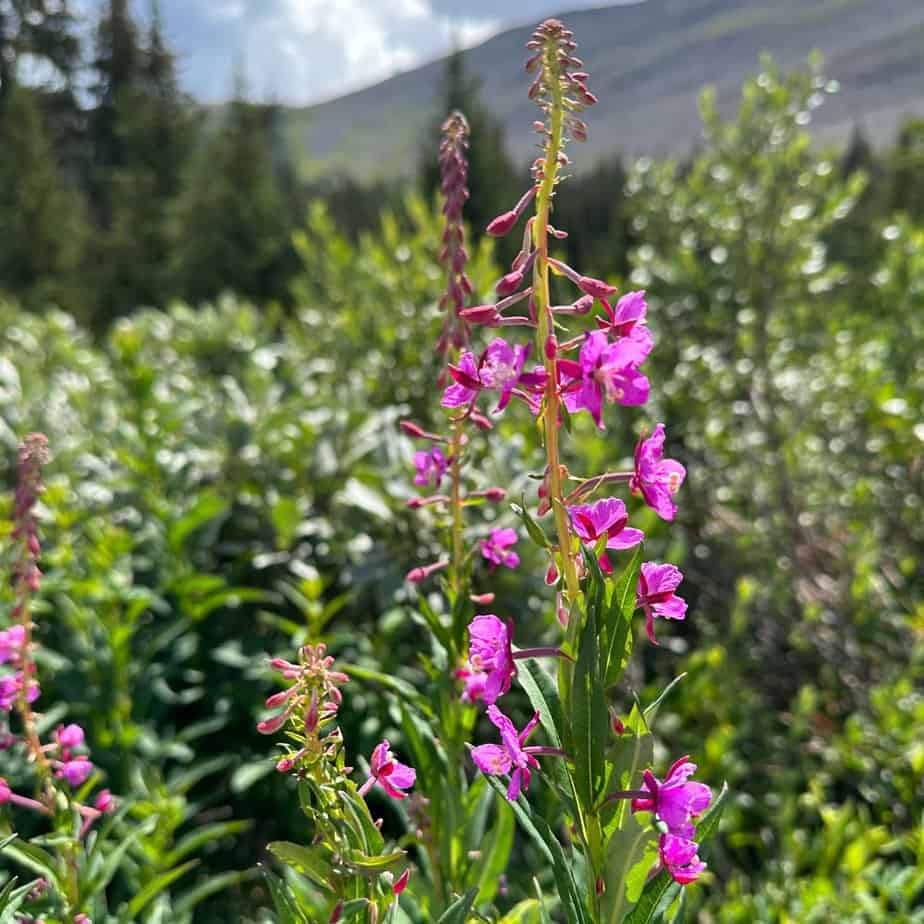
Fireweed provides nectar for bees and is a host plant of the White-Lined Sphinx Moth. While gorgeous in the wild, I think they would make for good garden plants too!
2) Shrubby Cinquefoil (Potentilla fruticosa)
More a shrub than a wildflower, this is one you will also see blooming throughout mountain regions of Canada at this time of year.
This native deciduous shrub with yellow flowers can be found in lots of landscaped areas as well. It grows up to four feet tall and attracts butterflies to its blooms.
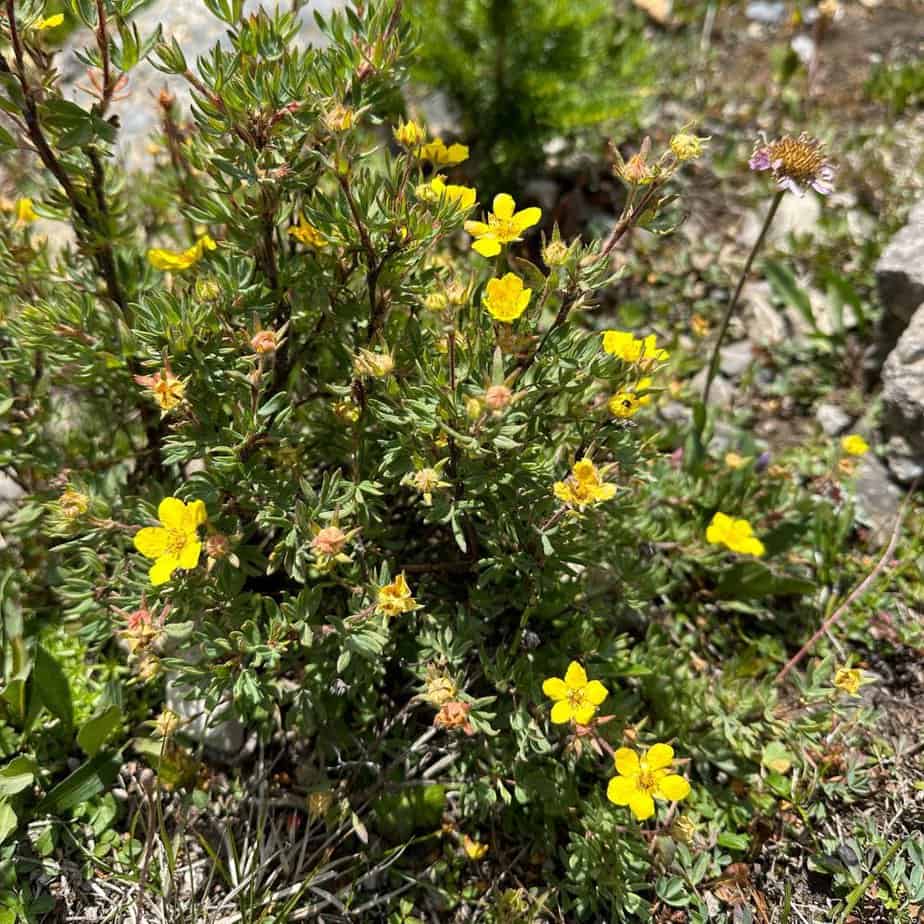
3) Rocky Mountain Goldenrod (Solidago multiradiata)
Also called Northern Goldenrod and Alpine Goldenrod, this plant species is native to many parts of Canada and grows all the way north of the Arctic Circle.
Goldenrod (Solidago) is considered a keystone species – one of the very best at supporting pollinators including bumble bees and honey bees.
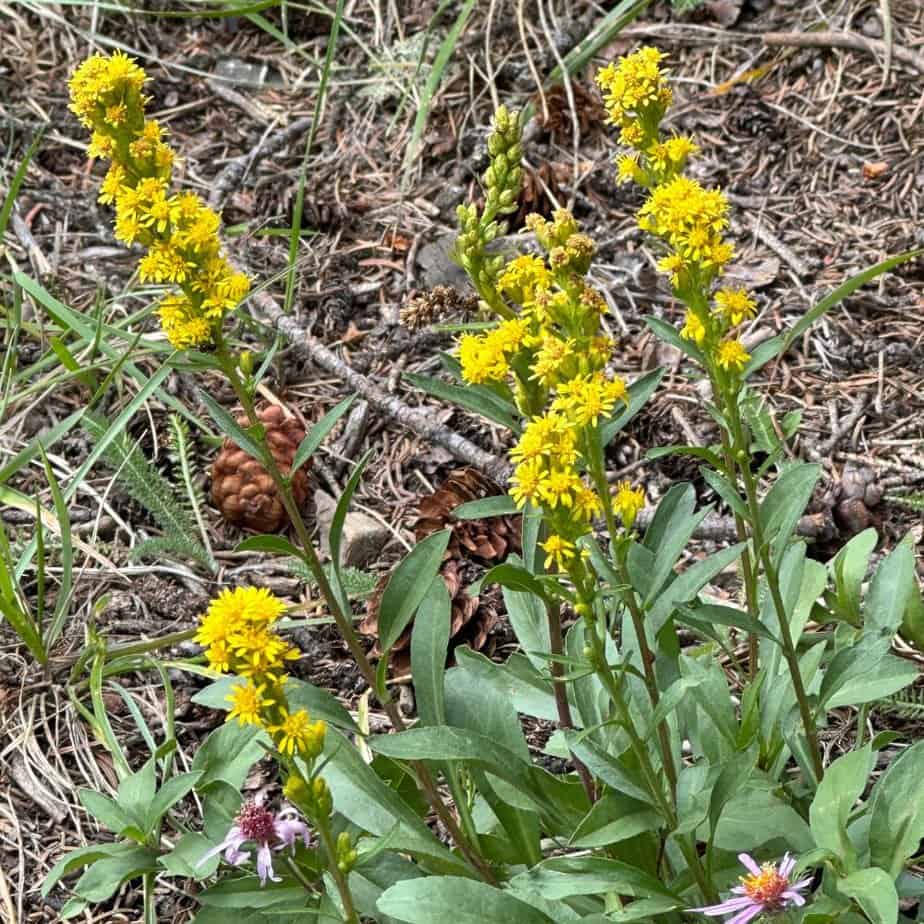
4) Western Showy Aster (Eurybia conspicua)
This pretty native wildflower with purple flowers is another great bee plant. Like Goldenrod, this species of plants is considered a keystone species.
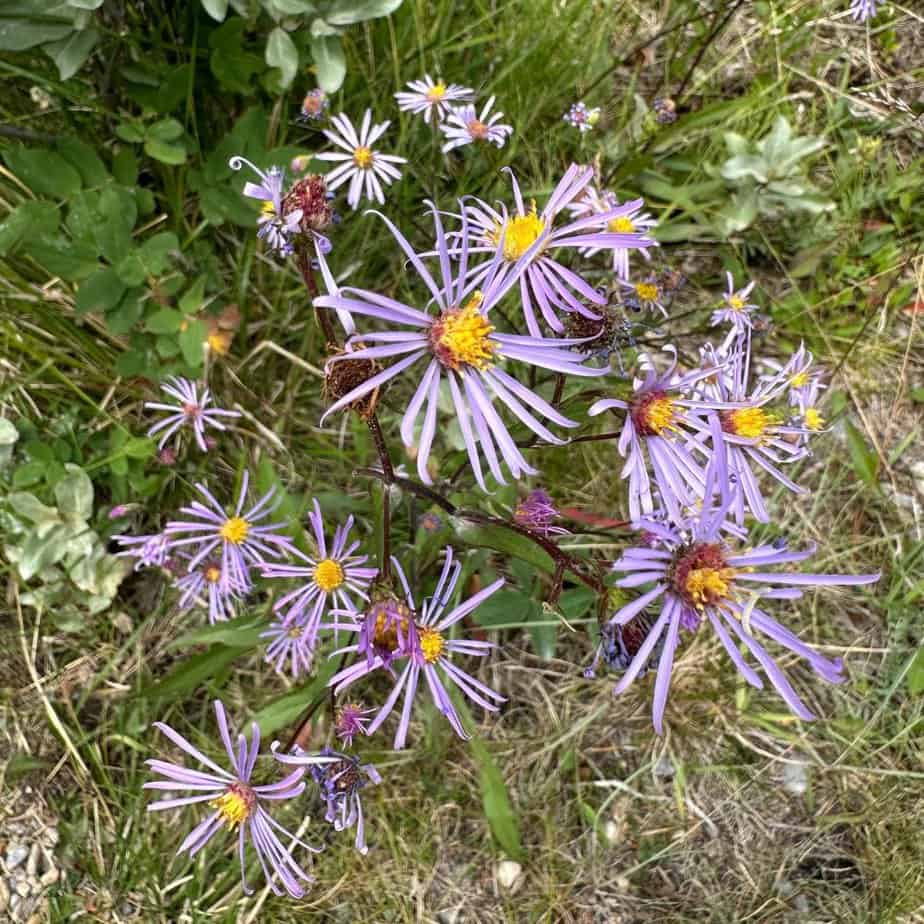
It also can often be found growing alongside Goldenrod. It is one of nature’s classic combos, and the purple and gold color palette is so pretty in a fall landscape or flower garden.
Western Showy Aster is native to Western Canada including British Columbia and Alberta. Here in Texas, our native Aster is the Fall Aster, which blooms in early fall. The New England Aster is another common species in Canada and the US.
5) Arrowleaf Senecio (Senecio triangularis)
Also called Arrowleaf Ragwort, these yellow flowers are native to western Canada and the western United States.
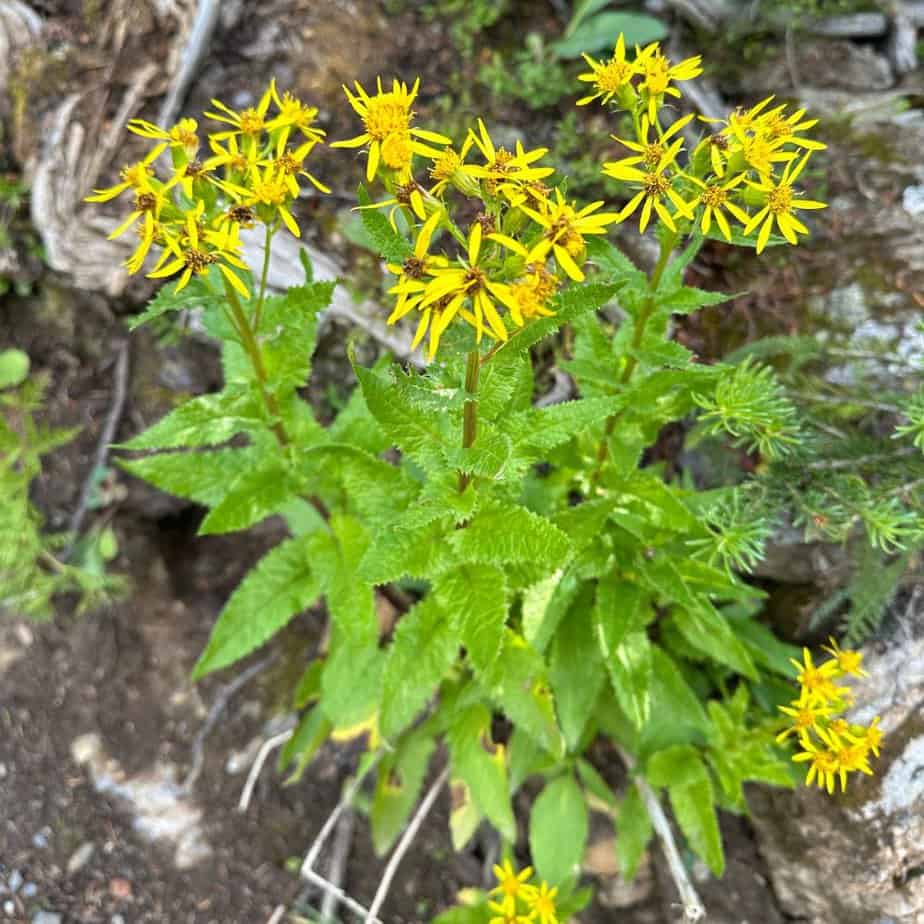
6) Mountain Deathcamas (Anticlea elegans)
This pretty wildflower has green leaves that look similar to grass, giving it the other common name of Alkali Grass. It is found in subalpine meadows throughout parts of Canada.
Be aware that Mountain Deathcamas is highly poisonous and contains toxic alkaloids that can be fatal.
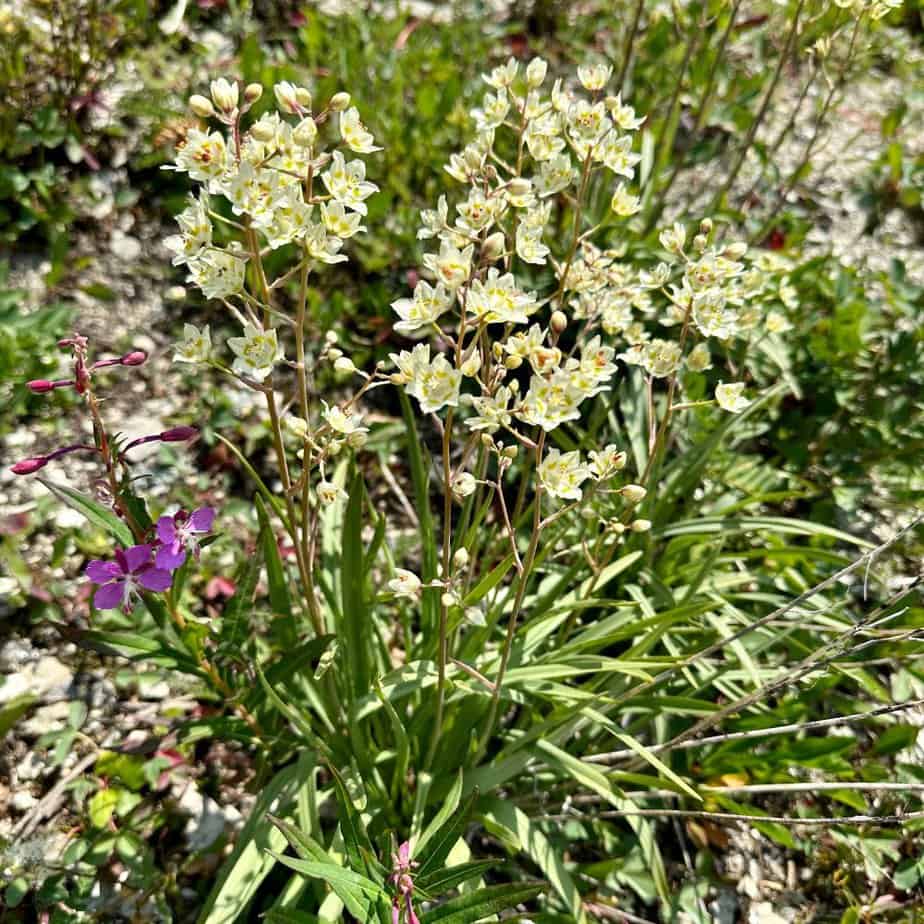
7) Bog Wintergreen (Pyrola asarifolia)
These native flowers can be found on the forest floor throughout Canada and the western United States. It has evergreen leaves that grow at its base.
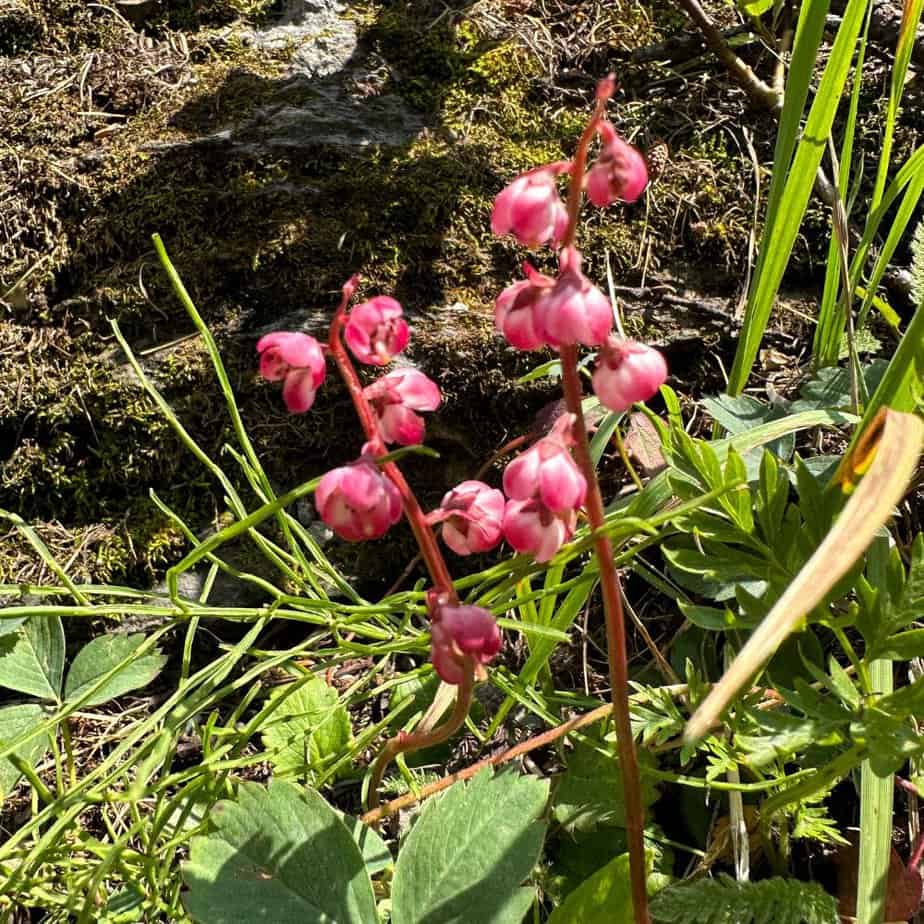
8) Broadleaf Arnica (Arnica latifolia)
One of the many yellow northern Rocky Mountain wildflowers, Broadleaf Arnica is native to mountain habitats. It along with Heartleaf Arnica (Arnica cordifolia) can be found in Canada blooming at this time of year.
Arnica is known to be anti-inflammatory and is a common self-heal remedy for bruises and injuries.
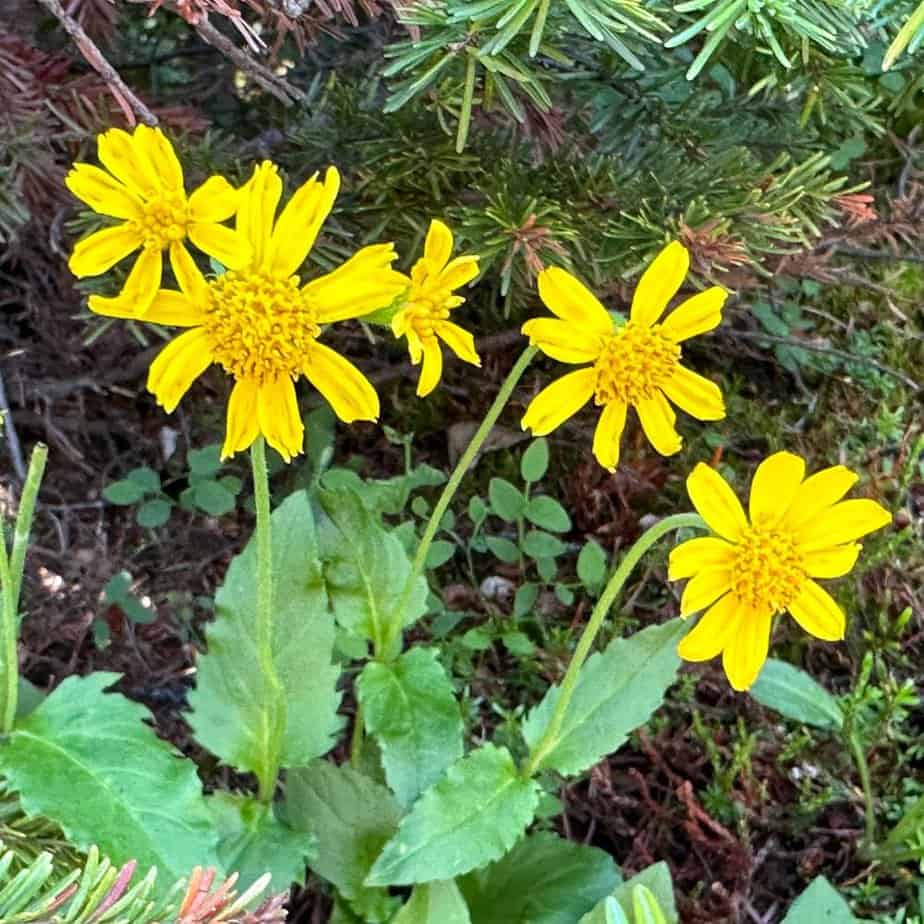
9) Fringed Grass of Parnassus (Parnassia fimbriata)
These beautiful Canadian wildflowers grow in large clumps. They like moist mountain environments and are native to western North America.
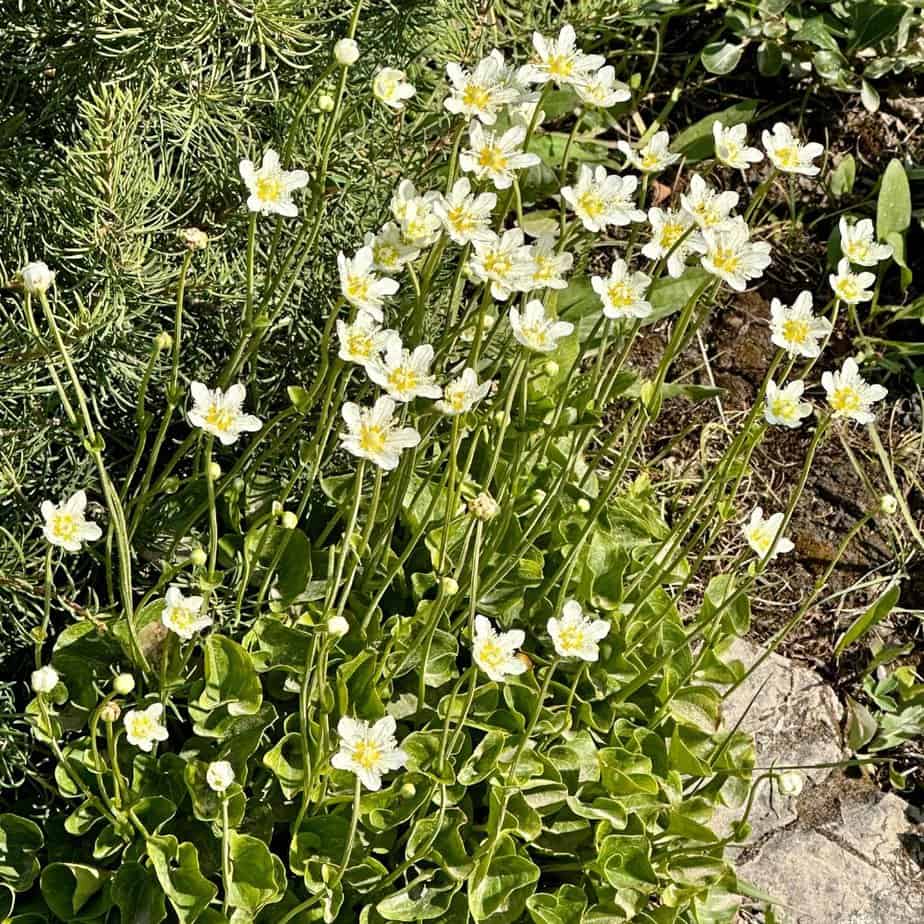
10) White Pasqueflower (Pulsatilla occidentalis)
By late July all that was left of these perennial wildflowers were their seed heads. However, they are beautiful and unique in their own right and reminded me of the Lorax from Dr. Seuss!
Also called Western Anemone, this flower is native to Western Canada and the US. I saw a ton of these flower heads in the high elevation of Sunshine Meadows.
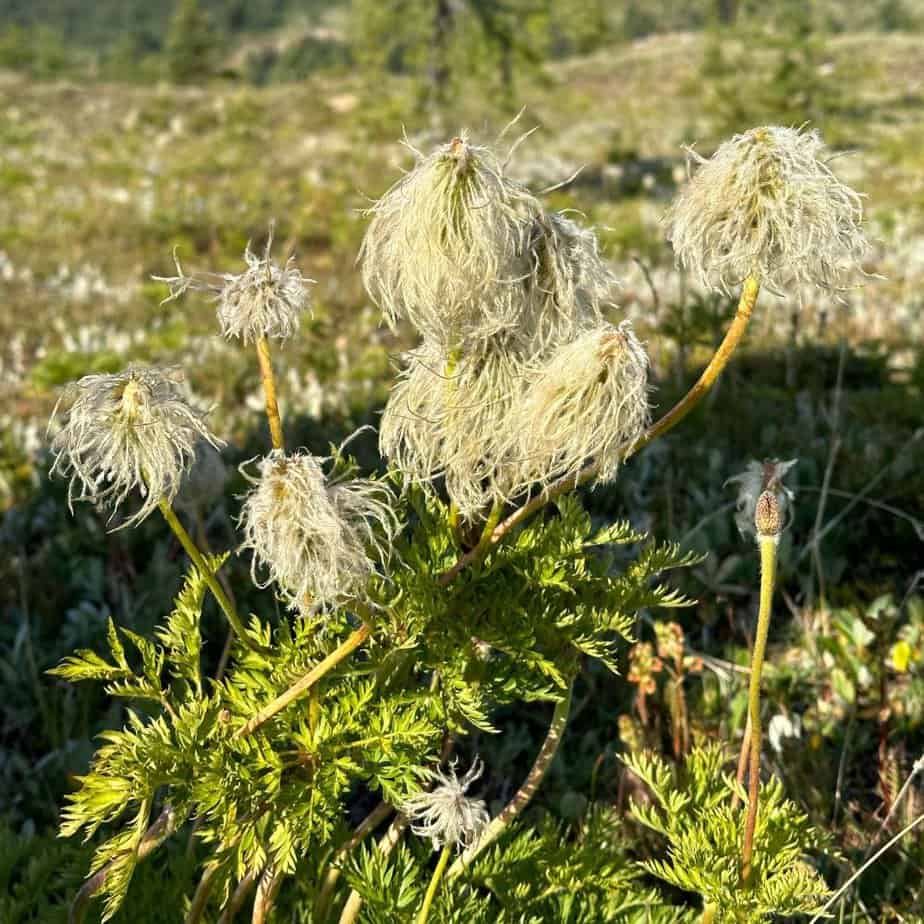
When they bloom starting in early summer, they have a pretty white flower with a yellow center. White Pasqueflower is toxic if eaten in large quantities.
11) Dwarf Fireweed (Chamaenerion latifolium)
This is a smaller species of Fireweed also found in mountain regions. It grows low to the ground along river banks with moist soil
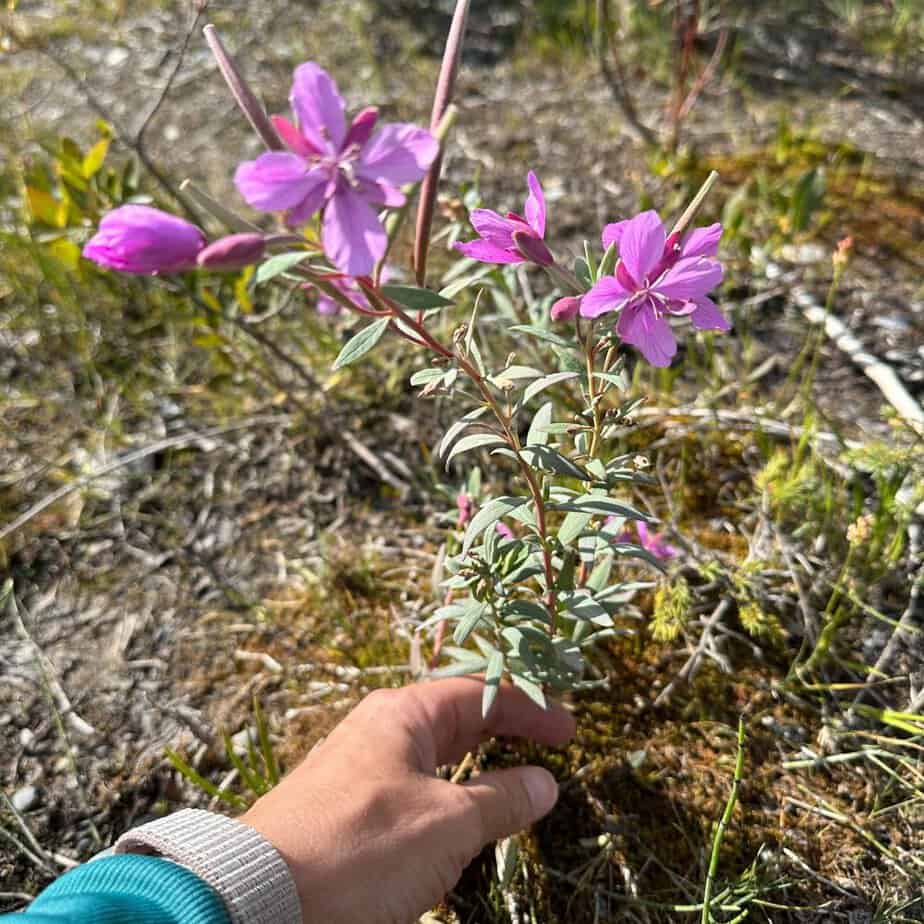
12) Indian Paintbrush (Castilleja species)
There are multiple Indian Paintbrush species native to Canada. I saw at least a couple different types on my hikes.
On the left is the light-colored Western Paintbrush (Castilleja occidentalis) which is found in subalpine and alpine zones in Canada. Pictured on the right is the Giant Red Indian Paintbrush (Castilleja miniata).
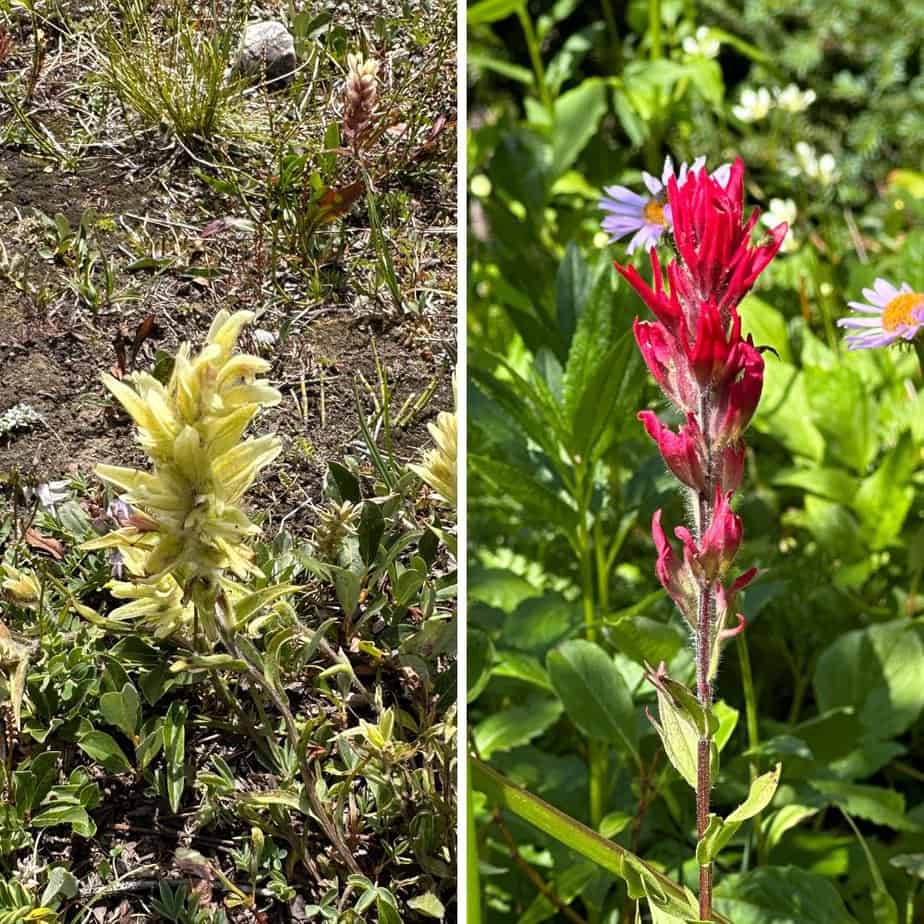
13) Hooker’s Thistle (Cirsium hookerianum)
This white thistle is native to Western Canada and the Canadian Rocky Mountains.
Pictured in the front is a seed head and behind it is an example of one of the white flowers. This plant is named for the botanist Joseph Dalton Hooker.
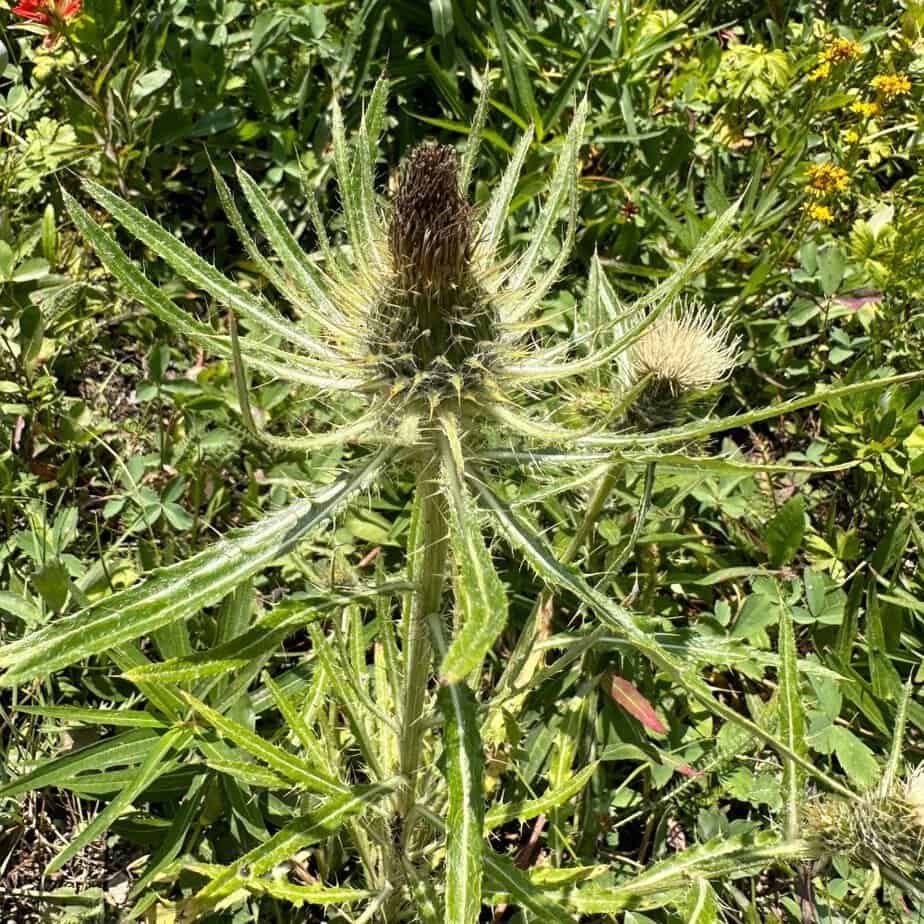
14) Fourpart Dwarf Gentian (Gentianella propinqua)
Native to Western Canada and US, this small wildflower was a rarer find. I think I only spotted one of these on all of our hikes, but its unique purple flowers caught my eye!
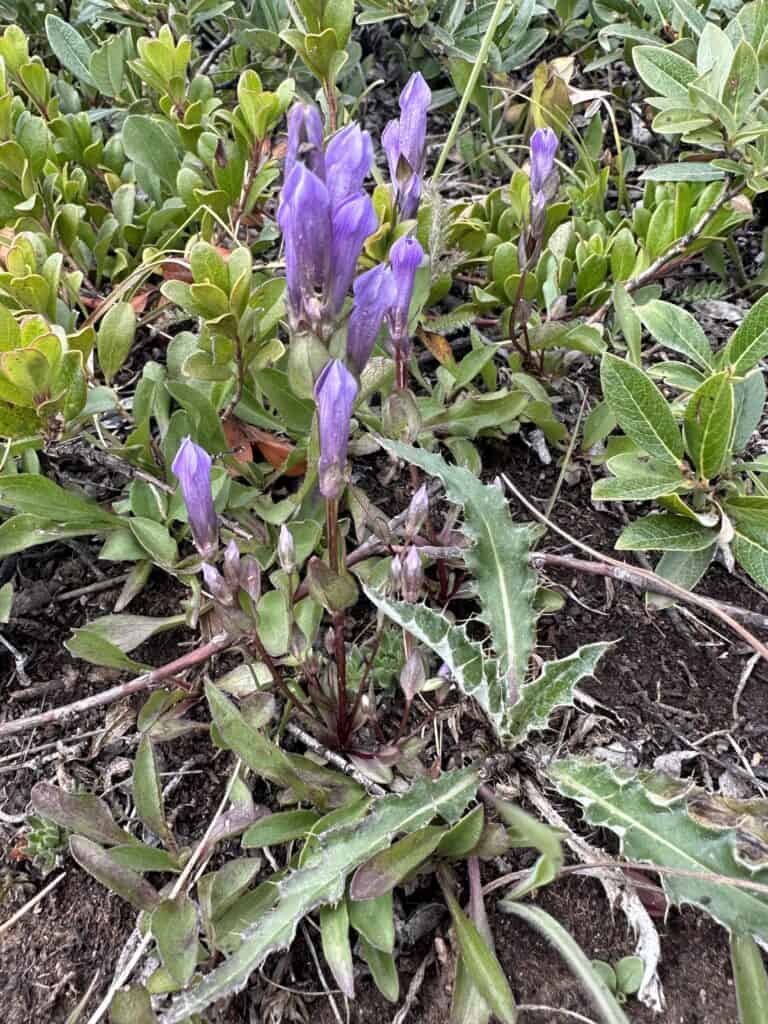
15) Alpine Forget Me Nots (Myosotis asiatica)
While I didn’t see any of these flowers on our visit to Banff, I’m including them in case you spot its unique flower color! These striking blue wildflowers bloom from June through September.
Alpine Forget Me Nots thrive in the harsh and variable climate of sub-alpine and alpine meadows above the tree line. Fun fact: It is the state flower of Alaska! It is native to the northwestern United States and Canada.
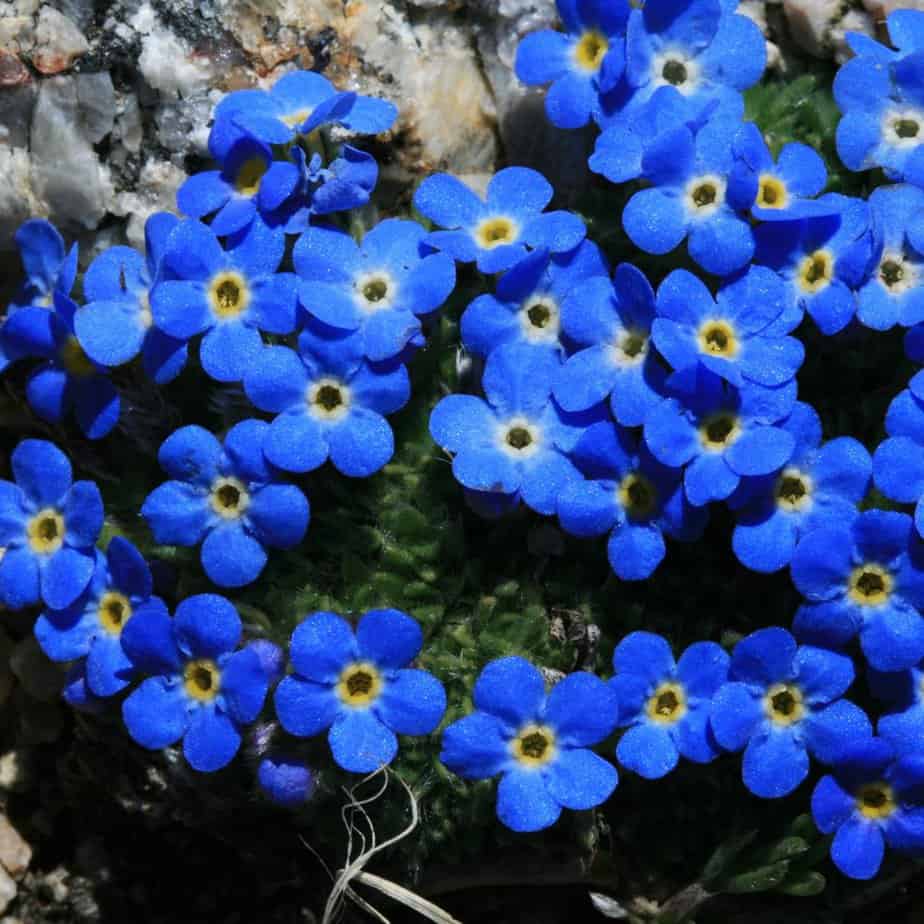
16) Subalpine Fleabane (Erigeron glacialis)
These Canadian wildflowers have purple petals with a yellow center. They are part of the daisy family and also go by the name “Glacial Daisy.” Look for them in a subalpine zone.
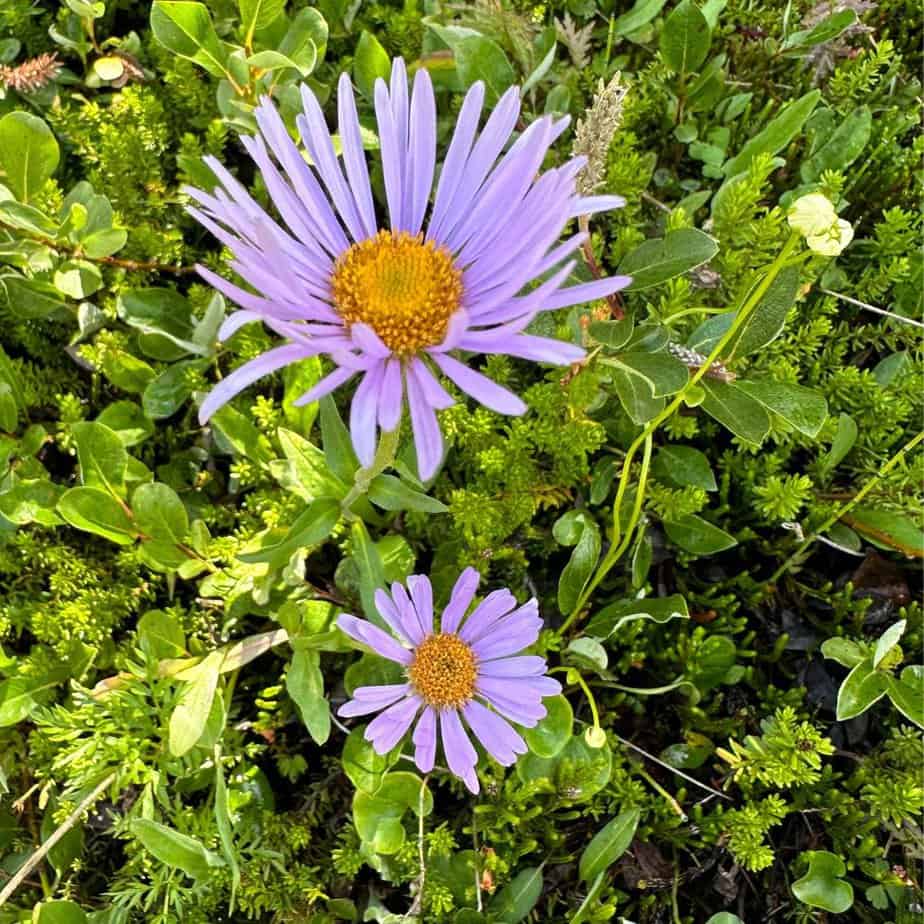
17) Curved Beak Lousewort (Pedicularis contorta)
This interesting looking flower has an interesting name to match! It also goes by the common name Coiled Lousewort and is native to western North America.
Curved Beak Lousewort can be found in the moist soil of forest floors and mountain meadows.
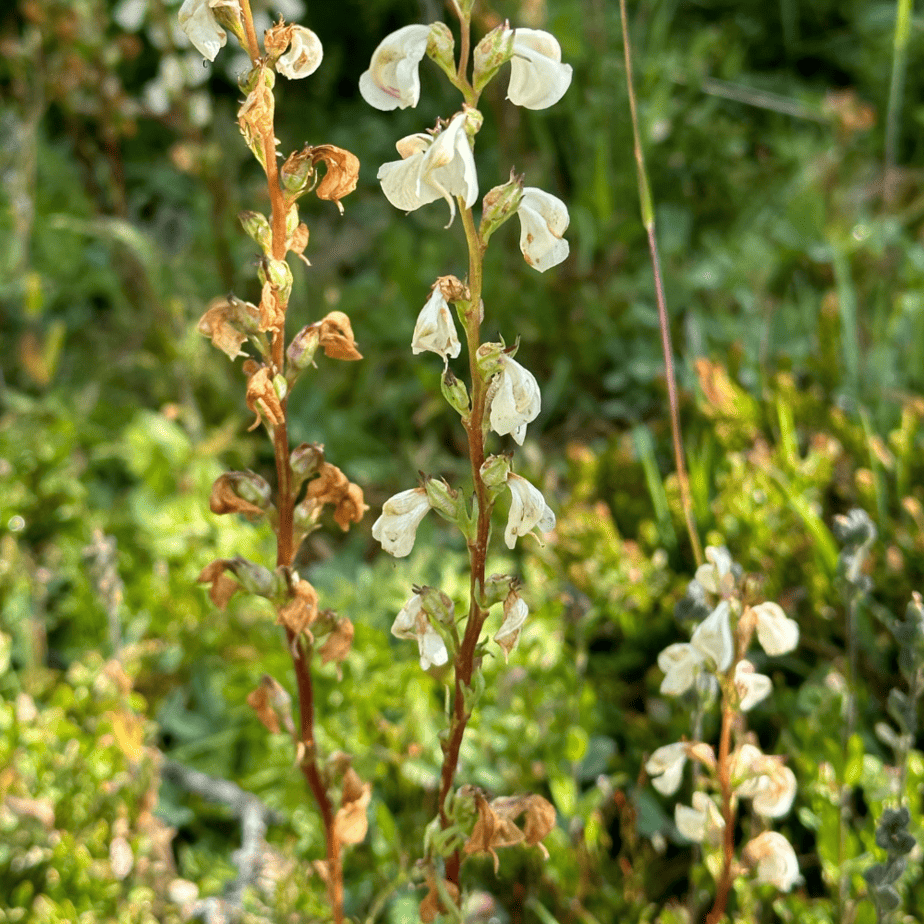
18) White Mountain Avens (Dryas octopetala)
I was so excited when I spotted a single bloom of this low-growing alpine flower along a walking trail.
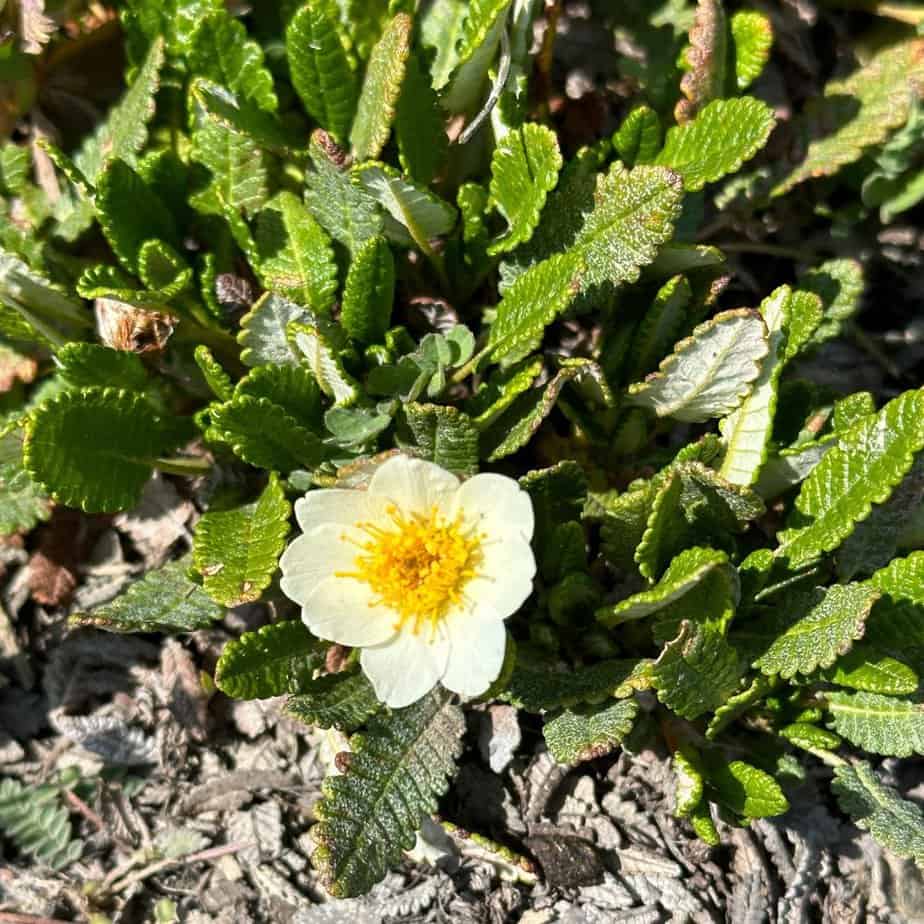
19) Sitka Valerian (Valeriana sitchensis)
The white flowers of the Sitka Valerian look similar to Common Yarrow, another Canadian wildflower.
It is found in moist high elevation meadows and is a medicinal herb known to help with sleep among other uses.
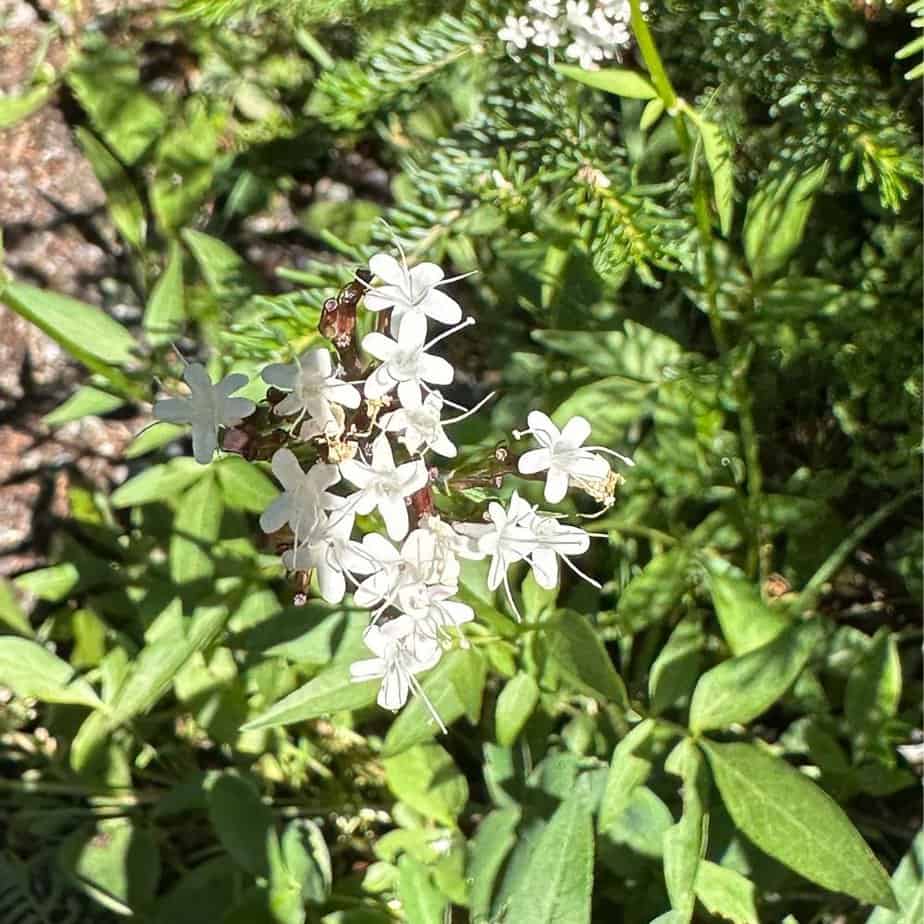
20) Common Yarrow (Achillea millefolium)
Of all these wildflowers, Common Yarrow is one you’ve likely seen before! It has a huge native range that spans most of Canada and the United States.
It is an excellent bee plant and was used for medicinal purposes by indigenous people.
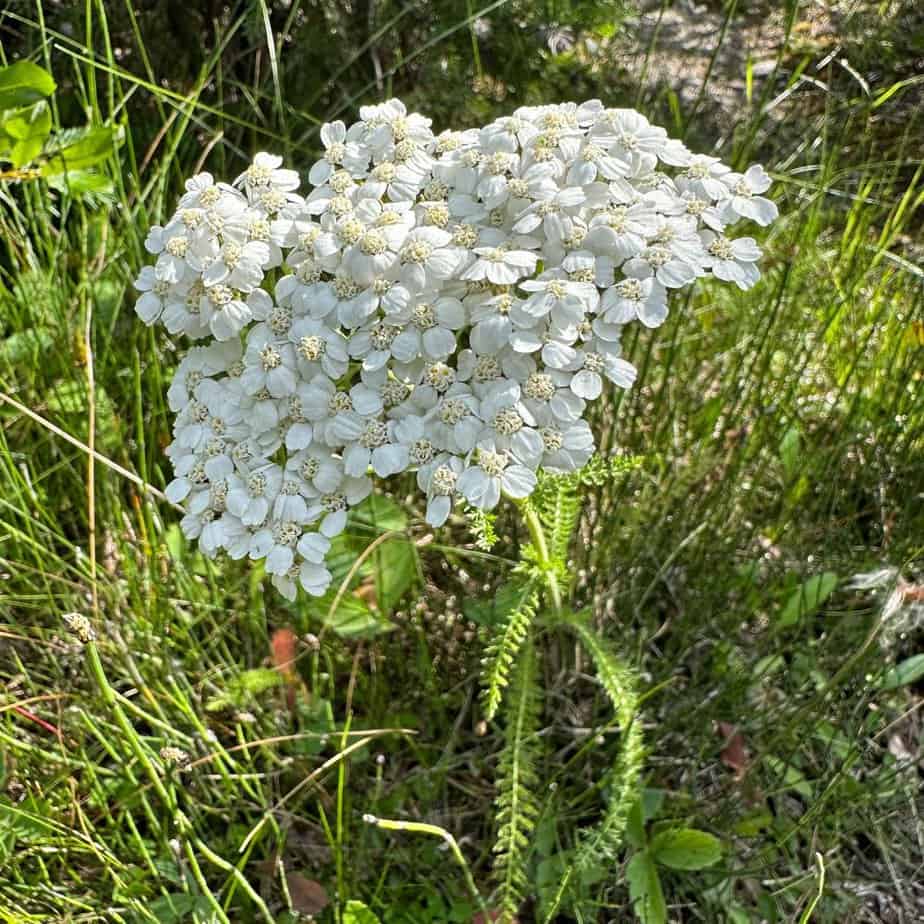
Get this wildflower checklist to take to Banff!
You can get this handy photo checklist to download and bring with you on your next Banff visit (or any visit to the Canadian Rockies!). It includes a photo, common name, and scientific name of 20 common Banff wildflowers.
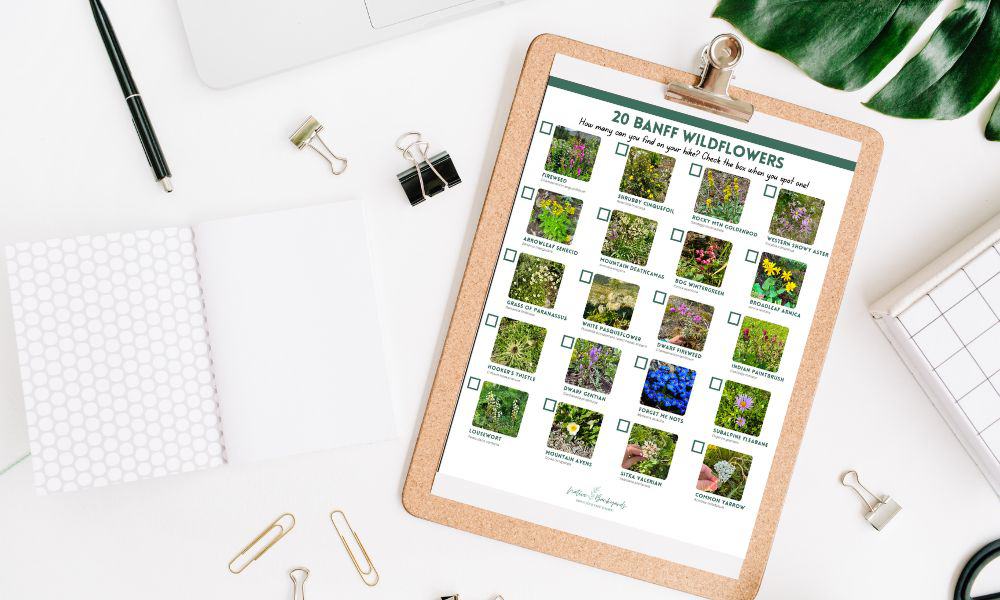
Other Common Canadian Wildflowers:
Even though I saw a ton of wildflowers on my trip, the reality is I just scratched the surface! Canada has a variety of wildflowers that you may spot in addition to those above.
More Alberta Wildflowers
These are also commonly found in the mountain regions:
- Arctic Lupine (Lupinus arcticus) – common wildflower in British Columbia
- Calypso Orchid
- Cow Parsnip
- Western Wood Lily
Other Native Canadian Wildflowers
These are commonly found in valley bottoms and plains regions:
- Black-Eyed Susan (Rudbeckia hirta)
- Wild Bergamot / Bee Balm / Cushion Plant (Monarda fistulosa)
- Purple Coneflower (Echinacea purpurea)
- Alberta Wild Rose (Rosa acicularis) – these wild roses are Alberta’s provincial flower)
- Three-Flowered Avens
Pin this list of Canada wildflowers to Pinterest!
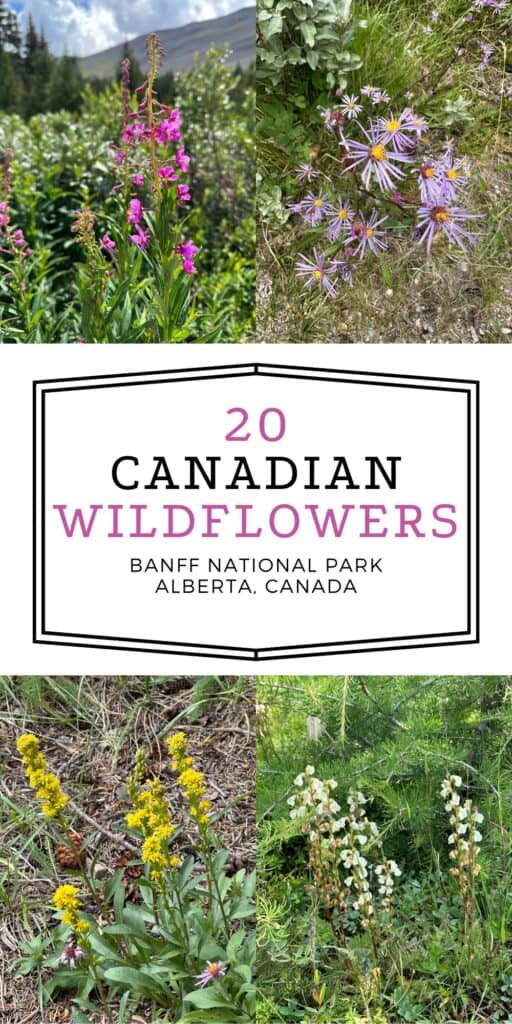
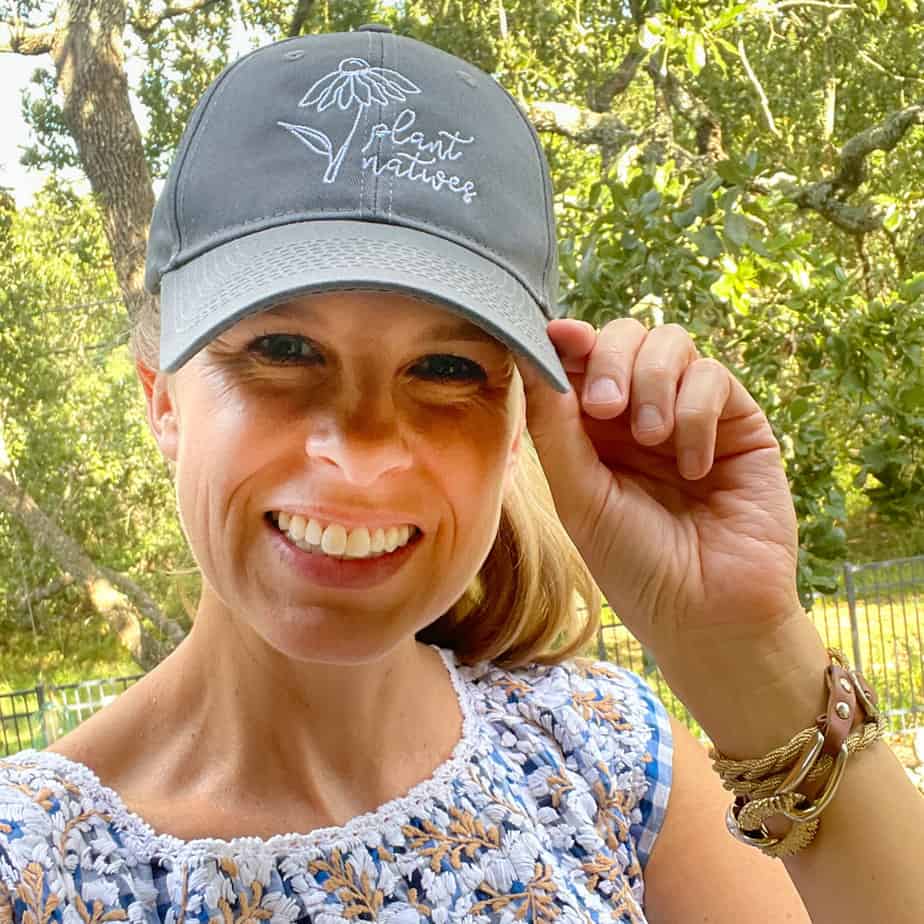
Welcome to Native Backyards! I’m Haeley from San Antonio, Texas, and I want to help you grow more native plants.
I have seen firsthand how the right plants can bring your yard to life with butterflies, bees, and birds. I’ve transformed my yard with Texas natives and I’m excited to share what I’ve learned with you.
Join my newsletter here! – each week I’ll send you helpful tips to make your native plant garden a reality!
Want to learn more about me and my garden? Check out my About page!
